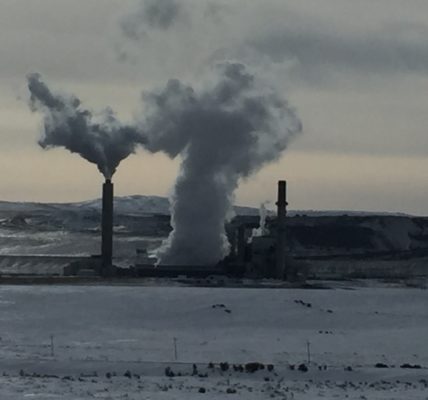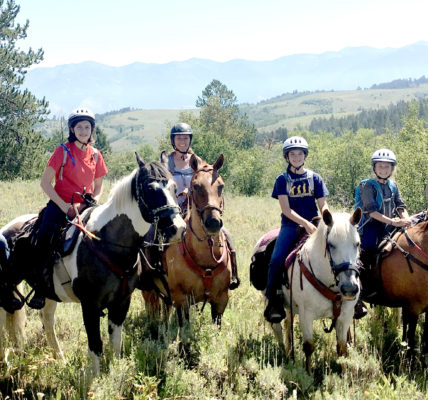
By Jackie Galli
Buffalo Bulletin
Via- Wyoming News Exchange
BUFFALO — The state of Wyoming continues to recover from the pandemic, with unemployment trending down and the average monthly employment back to pre-pandemic levels.
The preliminary numbers for the first-quarter average monthly employment this year was 3,187 compared with 2,978 in 2020 in Johnson County, according to data from the Wyoming Department of Workforce Services.
The first quarter in Wyoming had 269,312 average monthly employees, a few hundred more employees than in the first quarter of 2020. That’s the first time the quarterly employment numbers for the state have risen above numbers from before the COVID19 pandemic and declining energy prices caused the most-recent economic downturn from the second quarter in 2020 to the first quarter in 2021, according to a Wyoming Department of Workforce Services report.
David Bullard, the senior economist for the department, said the state’s employment, jobs and wages are growing, not in what he would consider a “boom” but at a faster rate than the national rate.
Room for recovery post pandemic mostly remains in the labor force participation rate, which still isn’t back to where it was in 2019, even as the population has continued to grow in Wyoming, Bullard said. Labor force participation means the amount of the population over 16 years of age that is either working or actively seeking jobs.
“There are many more jobs than unemployed people,” Bullard said. “If the labor force remains tight, wages may bid up.”
Increasing wages could draw in more workers to the labor force, Bullard said.
He said the labor force participation rate was impacted by the COVID-19 pandemic. One example he gave is how health concerns about returning to work influenced people to temporarily leave the workforce or retire early. That impact has died off, yet the labor force participation rate is still only slowly recovering.
Some of that slow recovery is due to an aging population, but outside of that, Bullard couldn’t give the reason.
“Earlier, we would talk about people’s concerns for their own health … and we talked about stimulus payments,” he said. “Most of that’s over with now.”
Wenlin Liu, chief economist for the Wyoming Economic Analysis Division, said the labor force participation rate in the state demonstrates the impact that having an older population can have on the labor force.
The state does not have enough people from Generation X (born between 1965 and 1980) to replace residents leaving the workforce in the baby boomer generation (born between 1946 and 1964), Liu said.
“Almost every industry is short on its labor force,” Liu said.
Johnson County had 110 unemployed people in August at a 2.5% unemployment rate, based on revised non-season- ally adjusted numbers from the Department of Workforce Services.
There were 8,740 unemployed people in the state of Wyoming this August compared to 19,000 open jobs, based on non-farm, seasonally adjusted numbers from the U.S. Bureau of Labor Statistics.
The unemployment rate in Wyoming was at 2.9% for August and September, lower than the national average by 0.9 percent- age points. Liu said that’s the lowest in Wyoming it has been since 2008 when the state saw a boom in the mining industry, which impacted Campbell and Johnson counties the most in the state.
Unemployment was at 2.6% in December of 2007 until April 2008, according to the Bureau of Labor Statistics seasonally adjusted data.
Bullard said the labor force numbers are still trending upward, and he suspects the growth rate will go up faster as people spend through the money they may have saved thanks to pandemic stimulus payments or the increased unemployment insurance payments during that time.
People also may be motivated to return to work if wages react to the market.
“Wyoming’s population workforce is driven by employment,” Liu said. “And employment is driven by the mineral industry.”
Bullard said that we “haven’t been growing superfast in terms of job growth” because of the slowed growth rate for jobs in the mining industry. You “can’t overstate” the influence of the mining industry on Wyoming, he said, and the nation has been shifting away from fossil fuels.
“So far that shift has been fairly modest and gradual, and we have other industries that are growing,” said Bullard.
Wyoming’s mining sector added 1,259 jobs from the first quarter in 2022 to the first quarter in 2023, an increase of 8%, according to data from the Wyoming Department of Workforce Services.
But even as the number of mining industry jobs has risen over the past three years, the overall trend since 2015 has been a decline in jobs. Liu said there were about 30 active rigs in 2019 and now there are 20. Over time, Liu said, the mining industry has also become more efficient and automated, meaning operators need fewer employees.
The trend away from fossil fuels in the U.S. could lead to a more diversified economy in Wyoming, which would have both positive and negative impacts on the state, Bullard said.
“If the state’s economy was more diversified, we would be less vulnerable to changes in energy prices,” he said. “The positive of the mining (industry) is very well-paying jobs and high taxes.”




